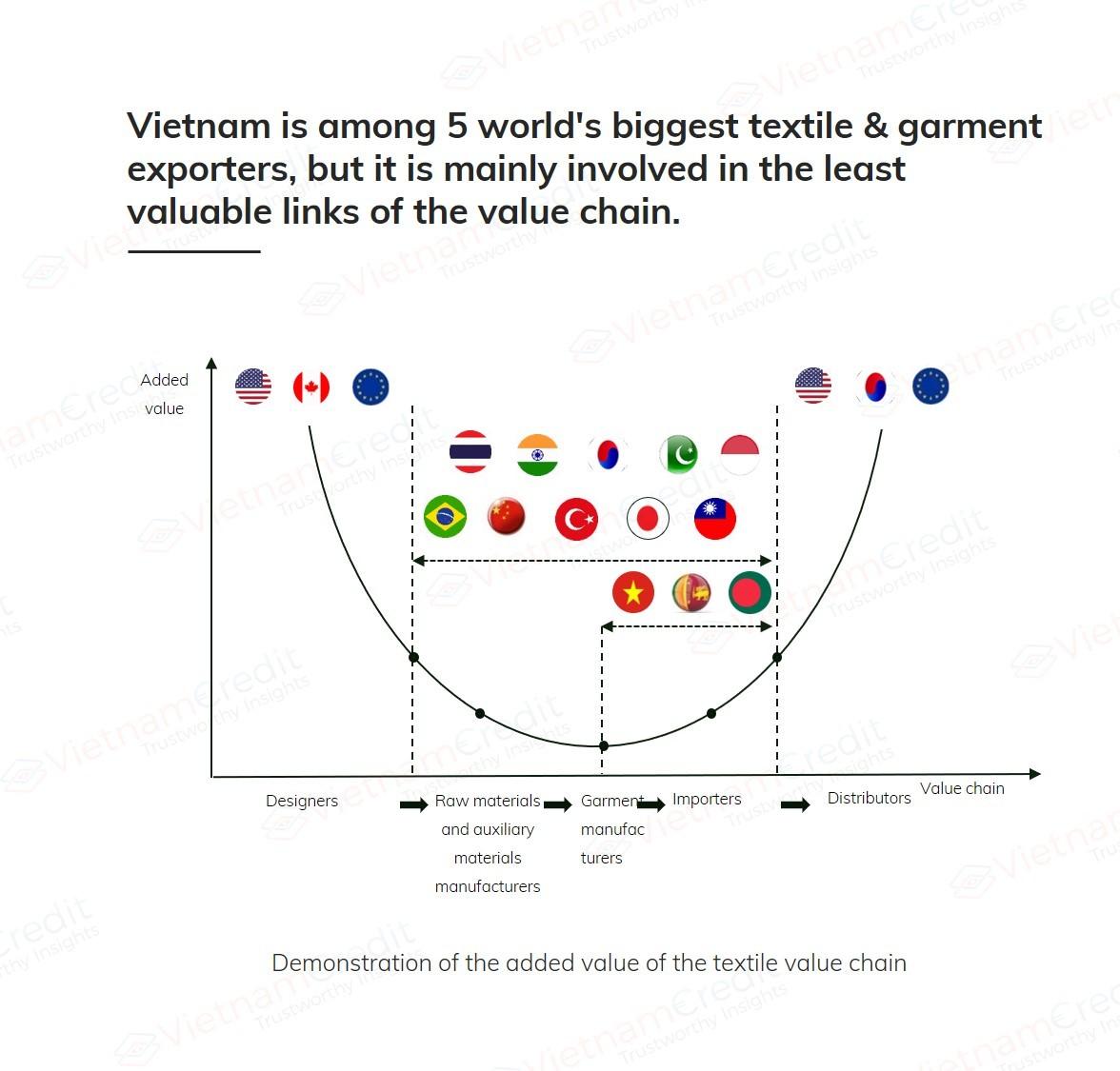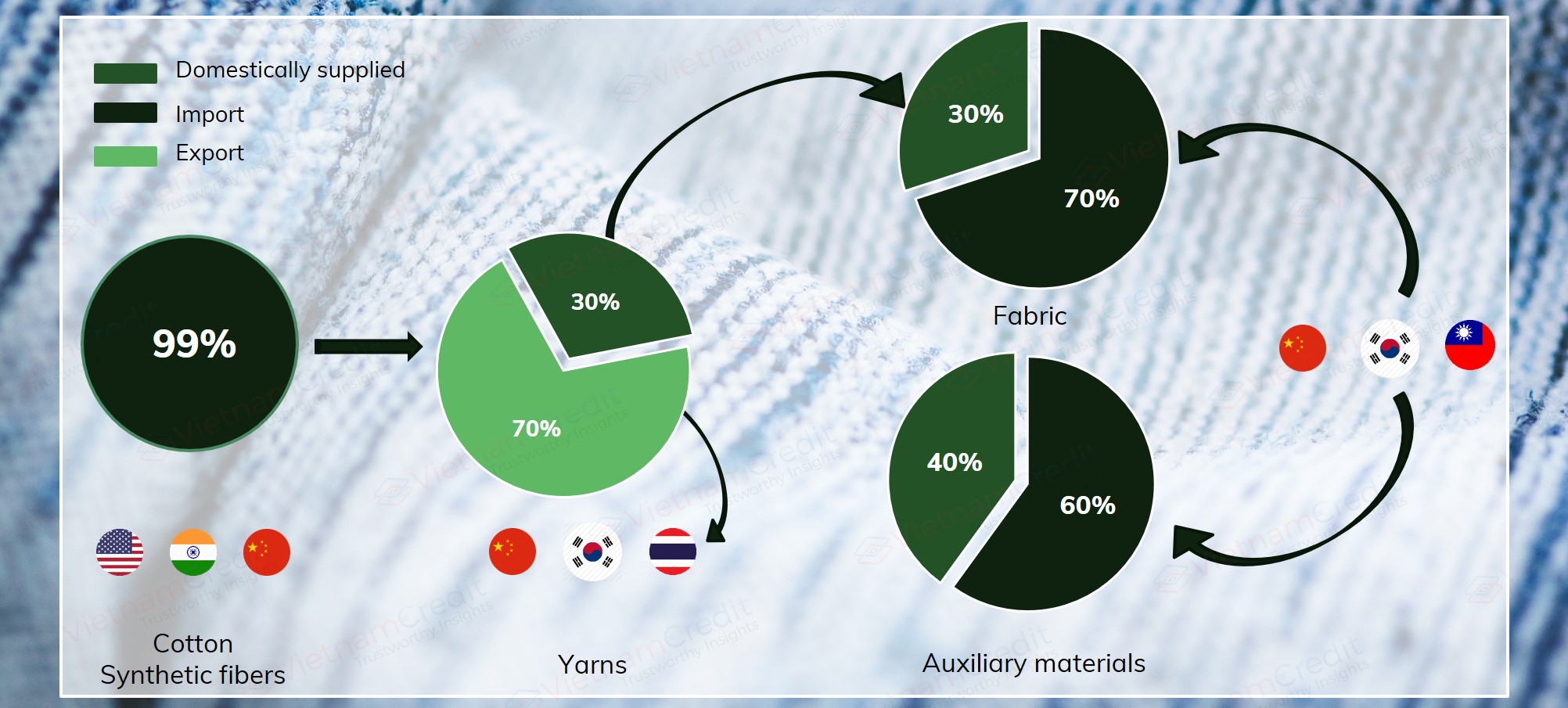Vietnam’s textile industry was once expected to benefit from Vietnam's accession to free trade agreements to the United States’ tariffs on Chinese products. However, complicated movements of the trade war are negatively affecting the production and business results of the domestic textile industry.
Textile industry is in turmoil because of war
Vietnam National Textile and Garment Group (Vinatex) is suffering heavily from the trade war, which has caused Vinatex's business results in the third quarter of 2019 to decrease significantly compared to the same period last year, thereby affecting the overall performance of the group. With the exception of Nha Be Garment, most of Vinatex's members’ revenue in the third quarter of 2019 decreased compared to the same period last year. Besides, the worry about lack of orders in the near future is also clinging to them.
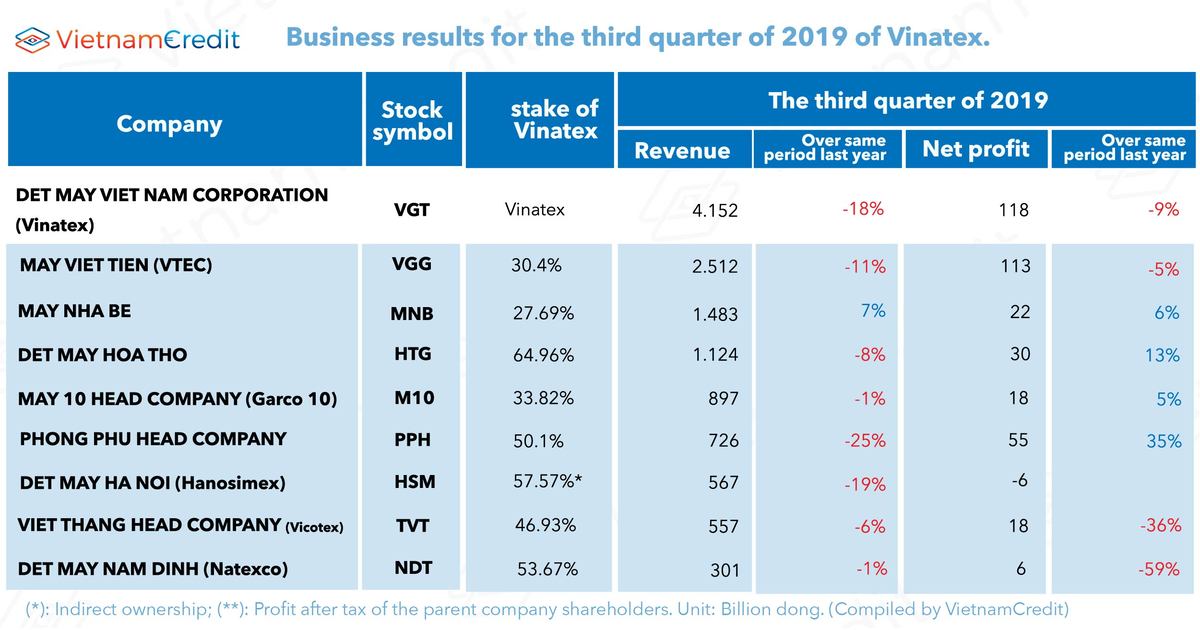
Previously, experts were concerned that the production capacity of Vietnam's textile and apparel industry would not be able to meet the increasing number of orders thanks to CPTPP, EVFTA or US-China trade war. However, the immediate reality is showing the opposite. The report on import and export of Vinatex shows that by the end of the third quarter, most of the members did not have enough orders until the end of the year. China tends to place orders in countries with tax incentives such as Bangladesh and Cambodia.
Analysts had expected that if Chinese garments were subject to taxation, a significant amount of orders would shift to Vietnam. However, in the global textile and apparel supply chain, of which Vietnam is a link, trade war is hardly expected. Before gaining benefits, Vietnam or any of the participants will experience business turmoil.
In 2018, when there were more orders, inventories of textile enterprises by the end of the third quarter mostly increased compared to the beginning of the year. The situation is reversed in 2019 when inventories by the end of the third quarter witnessed a sharp decline.
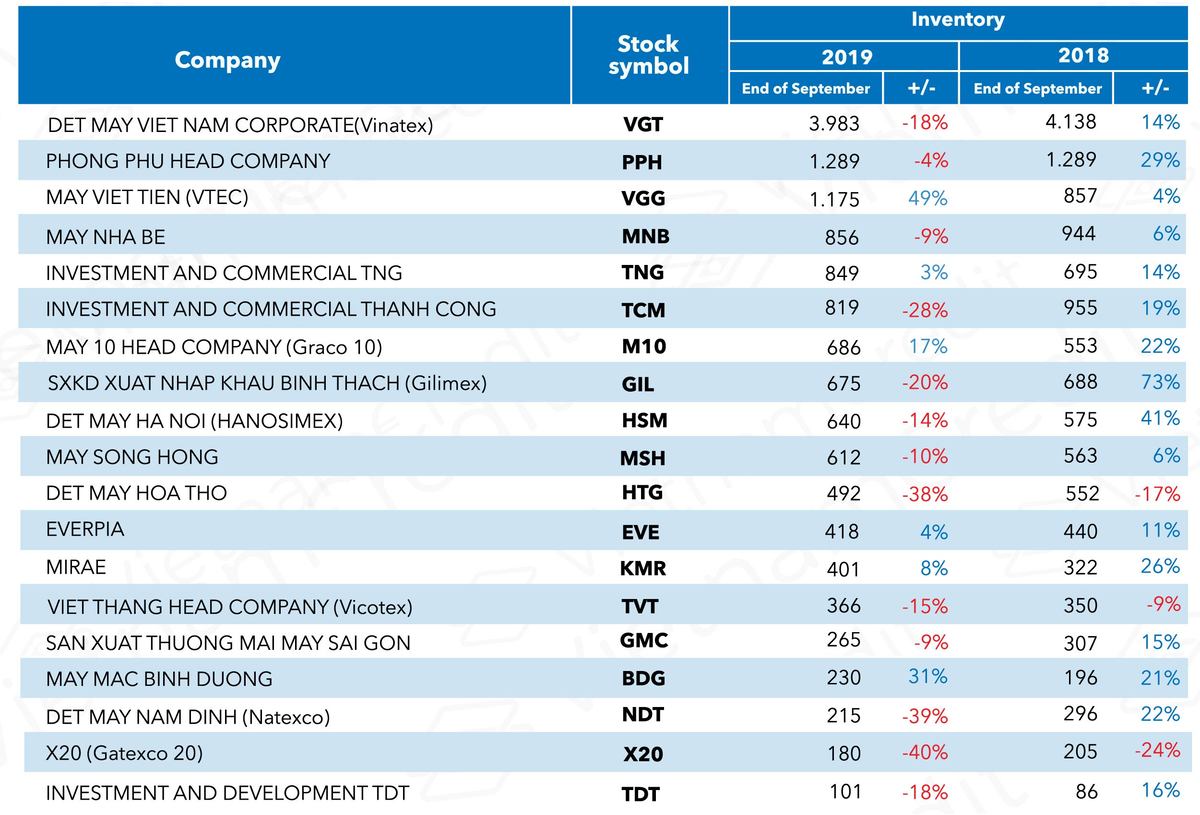
(+/-): Increase / decrease compared to the beginning of the year. Unit: Billion dong. (Compiled by VIetnamCredit)
Bright side
TNG and Song Hong Garment are experiencing the opposite. TGN said that the increase in its revenue was due to the company's restructuring of customers, focusing on large, branded and reputable customers. At the same time, costs have been reduced thanks to the application of advanced technologies and machines to increase productivity. Meanwhile, Song Hong Garment, which specializes in manufacturing garments and bedding, is in the list of textile enterprises whose gross profit margin improved over the same period last year thanks to boosting exports.
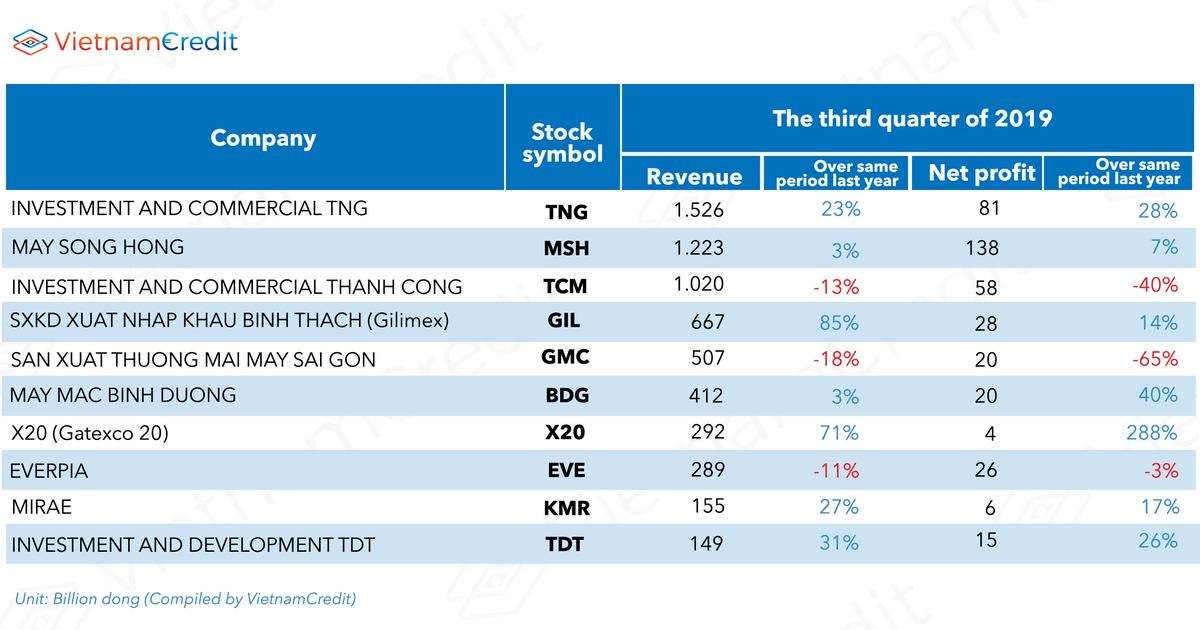
Gilimex's third quarter 2019 revenue increased by 85% over the same period last year. The positive result may come from expanding business with Amazon - a US retail giant. However, the decline in gross profit margin and sudden increase in sales expenses resulted in a 14% increase in net profit. Meanwhile, Thanh Cong Textile and Garment, one of the largest private textile and garment companies in Vietnam, witnessed a sharp decline in the company's profits due to the decreasing export revenue and shrinking gross profit margin. It is also important to note that in the third quarter of this year, Thanh Cong Textile and Garment had no revenue from land transfer rights like in the same period of 2018.
For businesses that cannot boost their revenue, shrinking gross profit margin makes their profit decline sharply compared to the same period last year. For example, Garmex Saigon’s net profit dropped by 65% when its gross profit margin decreased from 19.7% in the same period to 12.8% in the third quarter of this year.
Gross profit margin is shrinking
Most domestic textile enterprises have declining gross profit margin because customers are not only indifferent to long-term orders but also offer lower prices than in 2018.
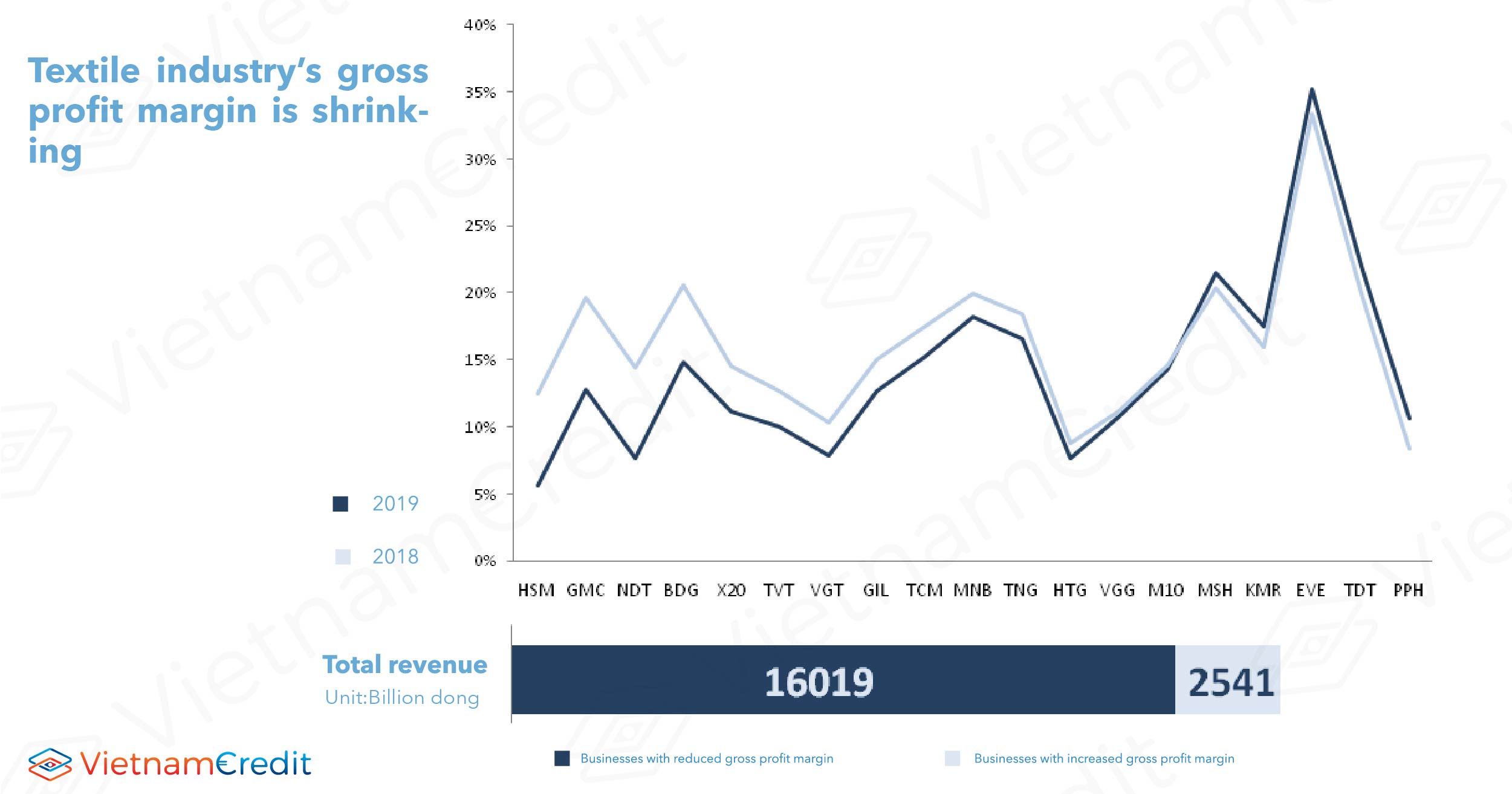
Among the textile companies mentioned above, only Song Hong Garment (MSH), Mirae (KMR), Everpia (EVE), TDT and Phong Phu (PPH, Vinatex Group) have higher gross profit margin in the third quarter of 2019 than the same period last year. However, they only account for a minority as when the number of enterprises having reduced gross profit margin is much bigger.
Another challenge for Vietnam's textile and apparel industry is that labor costs are gradually higher than those of the top 10 garment exporting countries, because cheap labor cost is always a core competitive advantage for Vietnam to attract textile orders. However, since the dawn of US-China trade war, the appearance of Chinese textile enterprises in Vietnam with the recruitment of thousands to tens of thousands of employees has pushed labor cost up sharply. This is obviously a big challenge for domestic textile enterprises.
With negative business results, most stocks of the textile and apparel industry in the stock market have declined in recent months. This does not only happen to stocks of enterprises with backward business results. Even stocks of growing companies, such as TNG or MSH, plummeted, with GIL falling by 40% from the peak set in early 2019.






